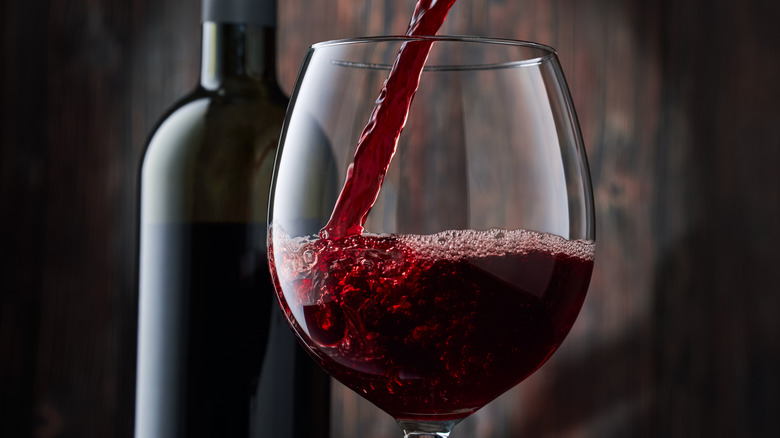It's Important To Remember The Price Of Wine Doesn't Always Reflect Quality
As consumers, we expect the price of a bottle of wine to reflect its quality but research has shown that expensive wines rarely live up to their status. In a study from the Journal of Wine Economics that used more than 6,000 blind tastings it was discovered that, when people don't know the price, they can't taste the difference between cheap and expensive wines. In fact, people tended to prefer the cheaper wines over the more expensive bottles by a small margin. The strange twist is that when we are told the price of a wine, we prefer the more expensive one.
Wine marketers understand this weakness in our psychology and use it to sell average-quality wines for premium prices. This isn't to say that all expensive wines are of the same quality as their more affordable counterparts but, for wineries looking to cash in on the luxury wine market, it's notable that the quality of the wine matters less than the aura that surrounds it. As such, a good marketing strategy can seemingly elevate a mediocre wine into one that's complex and nuanced with a bright finish.
The inside scoop on wine marketing
There are three main ways that wine companies market their wines these days: print, television, and social media. Print advertisements in wine magazines can provide a sense of acceptance by wine experts. Wine magazines tend towards award-winning wines with great ratings and high price points, so, even if you're paying to have your wine advertised in the magazine, it's going to gain some clout by association.
Social media — a newer entry to wine marketing — is quickly taking a lead role due to its huge potential to pull in a large audience while making a more personal connection. Seeing that a wine earned a rating of 95 out of 100 can give you some sense of quality but following a trendy wine expert on social media and watching them drink that wine with their friends on a yacht offers a whole new level of immersion.
Wine is seen as something complicated and difficult with real social repercussions when you get it "wrong." When we witness someone getting it "right" with this particular bottle of wine, we feel confident that it is a good choice. It's doing what television advertisements could only dream of: convince you that what you are seeing is true to life even though it's staged. The wine influencer is likely getting paid and their feelings about that wine may be about as genuine as a TV commercial but social media feels more believable.
What is good-quality wine?
If price isn't a reliable quality indicator, then what is? It all boils down to preference. You must taste the wine and, if you like the taste, then it's good wine. Would you go back for a second glass? If not, maybe it isn't that good. Certainly, there's a level of subjectivity here that makes it difficult to generalize but that pitfall seems unavoidable for any type of food or drink.
That said, there should be ways to determine a rough range of quality before purchasing the bottle. If you maintain a wine journal you can keep track of what types of wine you like. Other wines from the same vineyard would be a great start or even other vineyards from the same region. Where the grapes are grown, called the terroir, has an outsized impact on the wine's flavor, so if you like one wine from the area you may like others.
If you are at the wine store picking out a bottle, take a look at the label for indicators of quality. A wine that lists the grape varietals is a good sign. If it lists Syrah-Grenache, that likely indicates more care than a bottle that simply states it's a red blend. You can also look for wine appellations which indicate the bottle was grown according to particular standards. Knowing that the wine was made in accordance with regionally specific quality controls is reassuring.


